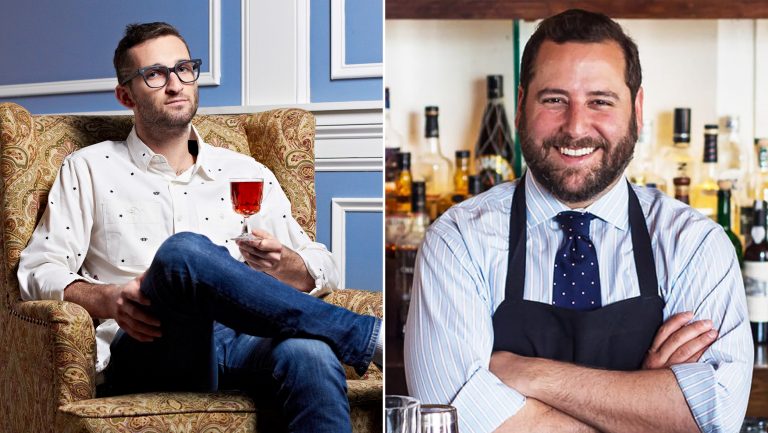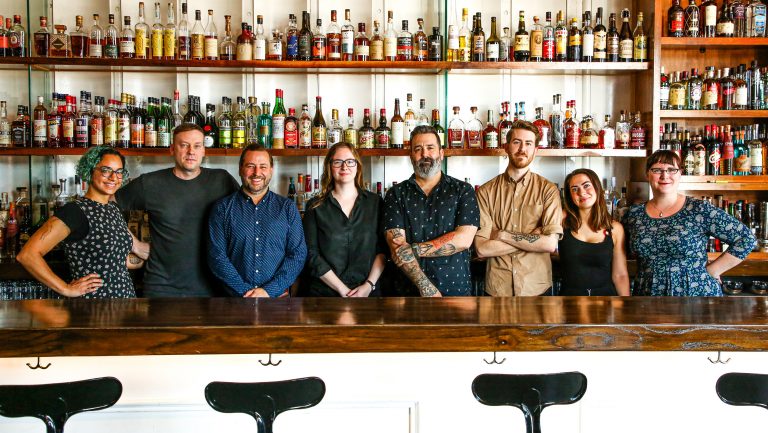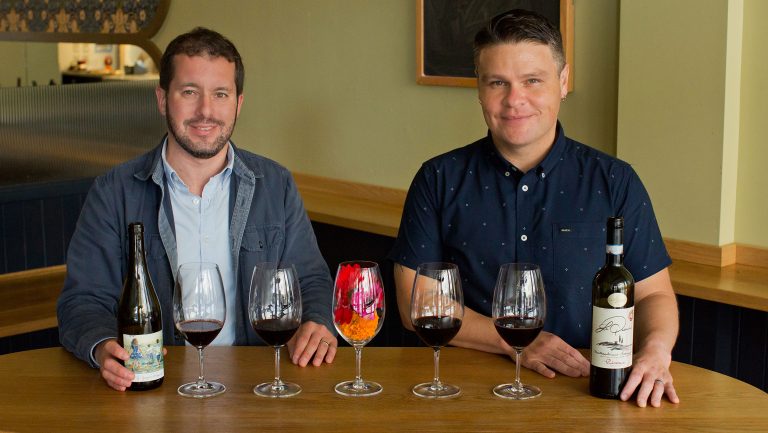Sooner or later, every bar owner hires out of desperation. Those doing the hiring—managers and proprietors alike—just want to find good people, people who fit into the establishment’s culture, give great service, and care about their work. But is hiring a chicken-or-egg situation: Do long-term employees result from the right hiring decision, or does the right training and culture engage new hires and transform them into company stalwarts?
A decade ago, the burgeoning craft cocktail movement was characterized by remarkably rapid innovation and knowledge development. Since then, that movement has matured into a respected branch of the food and beverage industry—the James Beard Foundation Awards even added an award for outstanding bar program in 2013.
A side effect of the rapid growth of the cocktail industry is that owners and managers frequently struggle to find the right bar staff; experienced cocktail bartenders often bounce between jobs, and the effort involved in training someone new to making drinks can be substantial. Increasingly, operators have determined that the best long-term strategy for their companies features the creation of robust recruiting and training programs. Here, several experienced employers from across the country share five of their best tactics for building a dedicated, engaged staff.

Don’t miss the latest drinks industry news and insights. Sign up for our award-winning newsletters and get insider intel, resources, and trends delivered to your inbox every week.
Hiring Personality over Expertise
In the past, cocktail bartending positions were often filled by the applicants who possessed the most knowledge and command of esoteric Prohibition-era recipes. These days, hiring decisions are increasingly focused on a candidate’s personality, how the person will fit in with the company’s culture, and the potential hire’s outlook and attitude.
Consider the industry’s common saying: “You can teach anyone how to make drinks, but you can’t teach them not to be a jerk.”
“I usually don’t even ask about [an applicant’s] cocktail or spirits knowledge,” says Danny Shapiro, an owner of Scofflaw and other cocktail bars in Chicago. Shapiro noted that if an applicant does have cocktail experience, he doesn’t weigh that very heavily in his decision making. Instead, he gauges prospective hires for warmth, courtesy, and empathy.
At Death & Co., a New York City bar that’s preparing to open its third location, in Los Angeles, the hiring team completely revamped its interview process before it opened its Denver location. An applicant begins the interview with an online survey that asks a number of professional and personal questions designed to gauge a person’s cultural fit. “It usually takes people 45 minutes or more [to complete],” says David Kaplan, the bar’s founder and owner, “but it [can demonstrate if] they’re a serious applicant.”
After the online questionnaire, potential hires move on to an in-person interview. On passing that stage, they’re invited to a group interview. Partway through the group interview, prospects are split into teams and compete in a brief game that incorporates critical thinking and teamwork. This allows Death & Co. management to evaluate candidates not just as individuals but as part of a group; management can see how they work together, solve problems, and relate interpersonally.

Demonstrating Hospitality Expectations
Businesses have different expectations, styles, and cultures, so it’s important to make sure that a new hire is correctly aligned with a particular company. As part of Scofflaw’s training, new employees spend two hours sitting at the bar as customers during peak times on a busy night. Shapiro’s goal is for new staff to see the flow of service from the customer’s point of view, and to observe and note the ways in which staff effectively produce drinks at speed during a rush.
Meaghan Dorman, the beverage director and a partner at two Dear Irving locations and Raines Law Room in New York City, employs a similar strategy. New employees are invited to the bars as guests, allowing them to fully experience the bars as a guest would. “Seeing [service] in action speaks volumes,” Dorman says. Experiencing a high level of service as a customer also helps new hires understand what will be expected of them, and the skill that’s necessary. “We try to [instill] the information and our expectations as early as possible,” says Dorman, “and as completely as possible.”
Accommodating Individual Learning Styles
People learn in markedly different ways—some more successfully absorb information through demonstration, while others need print materials they can study. Still others learn best by doing. As hiring shifts away from strictly experience-based considerations, more owners are strengthening their training programs. For instance, Death & Co.’s training features a robust complement of classroom learning, hands-on demonstration and instruction, tests, and supporting materials.
At her bars, Dorman says, “we’ve worked on getting things written down that in the past were just verbal.” Over time, she realized that the many details she was teaching bartenders verbally or through hands-on instruction needed to be included in the bars’ training manual to help ensure retention and adherence to consistent standards.
Cure in New Orleans, the winner of the 2018 James Beard Award for outstanding cocktail service, implements an apprentice program. “Everyone progresses at a different rate,” says Neal Bodenheimer, the bar’s owner. Prospective bartenders first work as a barback before graduating to bartender, at which point the entire staff offers feedback on the hire. No one advances to bartender without unanimous team approval. “It’s mentorship,” says Bodenheimer. “[New staff] get mentored by the people they work with.”

Treating Staff Like Professionals
As bartending has evolved from merely slinging drinks into a legitimate career path, so too have industry approaches to hiring. “I want people to feel like they’re making a long-term step,” Dorman says of new hires. “We start off on a professional foot from day one.” She conducts the orientation of a new hire to set the expectation that the position isn’t just another hospitality job. Dorman makes sure she is professionally attired and greets new hires with an organized sheaf of papers and a discussion of what is expected in terms of communication, conduct, and respect for coworkers.
Death & Co. has an open-books policy, whereby employees are kept abreast of company finances. “During training,” Kaplan says, “we teach everyone how to read a profit and loss statement, and we walk them through our company numbers.” He notes that the practice helps staff connect to goals and feel motivated to achieve them.
Articulating and Living Company Values
Management gurus have long preached that it’s important for companies to define their core values. The best-selling business author Jim Collins found in his research that the underlying common characteristic of great and enduring companies was whether or not they had a fixed set of values that guided their actions as a business. While not unheard of, the practice is still uncommon in the bar industry.
Death & Co.’s values, for example, include employee health, wellness, and community. The company provides health insurance for every full-time employee and a $50 monthly wellness budget for all staff. Last year, the company began donating 1 percent of its gross sales to Henry Street Settlement, a local social services and housing charity that was chosen by the New York branch’s team. The bar raised more than $20,000 for the charity in the first year of the program (the company has plans to implement the same program in its other locations), and many employees also volunteered at Henry Street together, working to enrich the local neighborhood.
Whether through apprenticeship, professionalism, or other tenets, owners are increasingly finding that clarifying values helps create a great team, full of committed individuals. And in doing so, they also create a pillar of long-term success.

Dispatch
Sign up for our award-winning newsletter
Don’t miss the latest drinks industry news and insights—delivered to your inbox every week.
Chall Gray is the author of The Cocktail Bar: Notes for an Owner & Operator (White Mule Press, 2018), co-owner of the acclaimed bar Little Jumbo in Asheville, NC, and a principal of the bar consulting firm Slings & Arrows. He lives in Asheville, NC with his wife and son.







